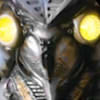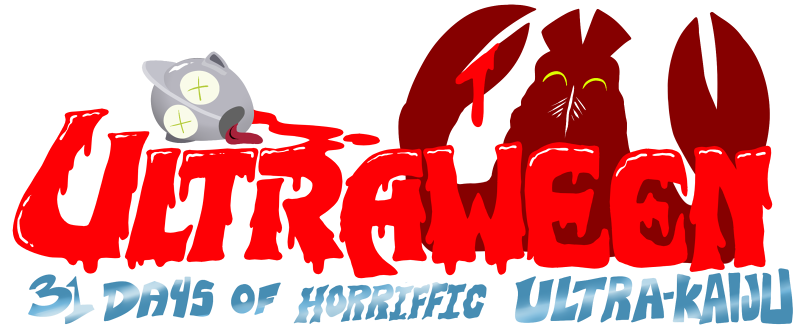
DAY ONE!
Written by Jonathan Wojcik
As I mentioned in my review of some Barom 1 monsters, the surprise 31-day October Monster Review this year focuses on the creepiest, most disturbing ULTRAMAN Kaiju! At one point I was planning it to cover horrifying kaiju in general, but Ultraman alone just provided so, so, so much material. It is, after all, by far the one Franchise with the largest variety of giant-sized monsters ever made, having well over 1,400 individual monsters and counting!We won't delve into the full, detailed history of the series, but all you need to know is that across its many, MANY series, there's typically a big silver guy (or lady) who has to protect the Earth (or at least Japan) from various huge creatures that may attack from just about anywhere, any time, for any reason, and with so many monsters attempting to pile drive assorted Tokyo landmarks, they delve into some fantastically bizarre, sometimes even disturbing territory, and perhaps one of the most famous examples to start off on is...
COMET MONSTER JAMILA
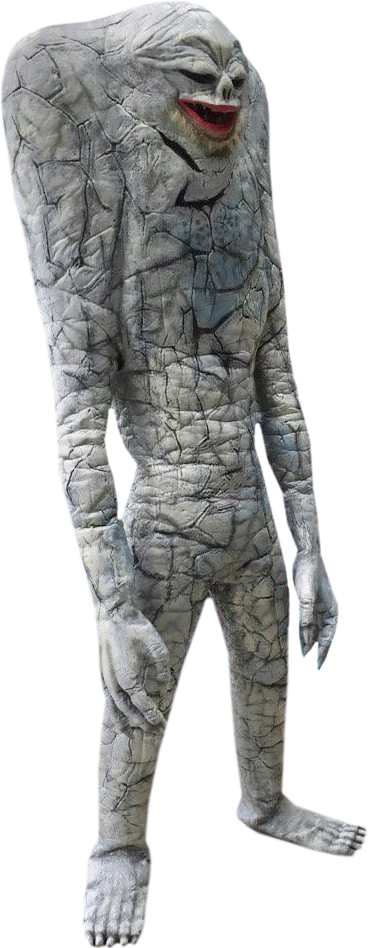
Just look at that miserable, miserable face. And how about the way this thing's arms are half encased in its own crusty looking flesh? It's like some sort of desiccated ape-man crossed with a crumbling old tombstone...you can already tell something is terribly, terribly wrong here. But what?
Jamila appeared in the 23rd episode of the 1960's "Ultraman" series, the first show to revolve around the titular hero but not necessarily the first show in the continuity. Arriving on Earth in an invisible high-speed starship, the fire-breathing giant seems hell-bent on attacking a Tokyo peace conference on such topics as the Cold War and the Space Race.
When Ultraman finally faces Jamila, the awkward looking monster proves to be surprisingly intelligent and athletic, with quick reflexes and advanced fighting skills, until it's accidentally demonstrated that ordinary water appears to burn the creature's skin. In a final showdown, Ultraman douses Jamila and the surrounding ground with water, and the monster slowly, agonizingly dies as it flounders in a lake of mud, still nonetheless attempting to crawl its way to that peace conference.
Jamila's eerie appearance, startling vulnerability and tragic backstory - which we'll get to in a moment - are well remembered by Japanese culture over fifty years after his 1966 debut, even his horrifying demise still playfully joked about and merchandised; this TV spot advertises a series of minifigures modeled to hang off the edge of drinking glasses.
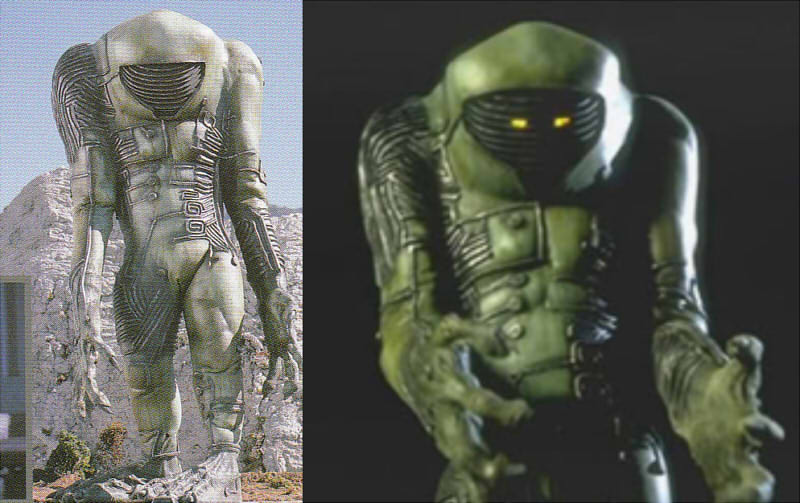
This staying power is particularly impressive, considering Jamila has reappeared for only sporadic cameos and a single "reimagined" version, seen here, resembling a more Gigeresque organic spacesuit. Definitely very cool, and I have to say I'm a big fan of both incarnations as creature designs, but this version never left nearly the same impression on its audience.
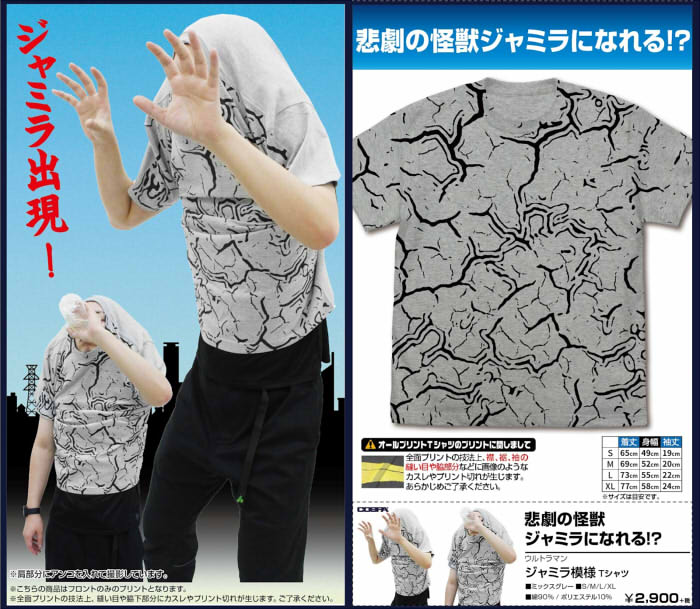
Since his episode first aired, it's even been so common to emulate the monster with a t-shirt that they finally released a licensed Jamila-patterned shirt so you can do it with an official stamp of approval. Pretty much everybody loves this hideous, miserable, dead abomination that melted in wet dirt, and even the guy who was in the Ultraman suit went down as saying he felt bad even pretending to harm Jamila. So, those of you who didn't know much about Ultraman might still have some questions, and we're going to answer them now.
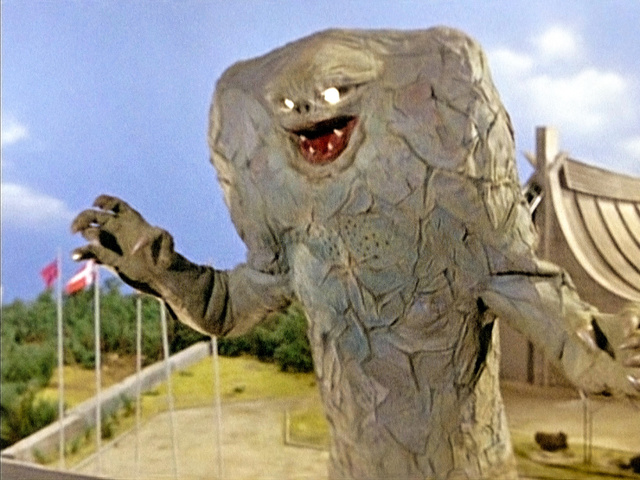
Jamila may be a monster that arrived from space, but he is not an alien. His original nationality isn't clear, but what we do know is that he was an astronaut who crash landed on a lifeless, airless alien planet during one of those original Space Race missions. Unable to launch a rescue mission but fearing public outrage and a loss of funding, his employers covered up his disappearance altogether, presumably not even telling his family what happened to him...all under the presumption he was doomed to slowly starve to death or run out of oxygen on a barren rock.
What precisely mutated this man into Jamila is never known, but he very understandably returns to Earth with a blind, vengeful rage. It isn't even just the fact that he was sent to his doom for his country, or even necessarily that they gave up and left him to die, either; it's the fact that they tried to hide it. What drives Jamila to murderous bitterness is that he wasn't mourned, he wasn't thanked, he wasn't given the dignity of any wide recognition for his presumed death, all so that his bosses could preserve their public image.
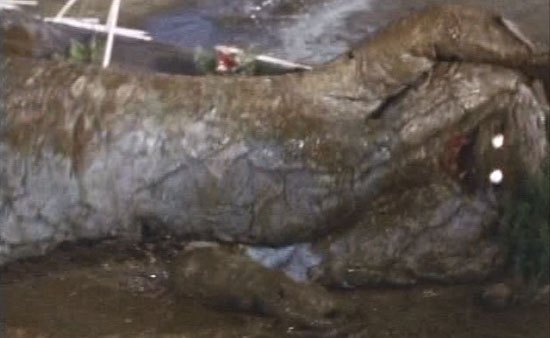
Giant Monster media has a reputation as corny, low-budget "schlock" or unintentional comedy material, but Jamila's story demonstrates how heartfelt and intelligent any medium can be in the right hands. This episode aired only three years before a human ever set foot on the moon, and we indeed didn't get to that point without a great deal of sacrifice; not all of which was public knowledge at the time. Though remembered as a grand and noble achievement, the birth of space technology in the 50's and 60's was driven first and foremost by fears of nuclear war and the mad rush by multiple world powers to see how quickly they could start aiming weapons at each other from orbit. As with much of the period's science fiction horror, the entire existence of this rubber kaiju costume was a bold and quite grave criticism of what was, at the time, being spun as a glorious patriotic endeavor by almost every big government on the planet.
It's also, when you get right down to it, a fascinatingly modernized (even today!) retelling of the most classic vengeful "ghost" legends. It all ends with the truth of the monster's origins having finally come out, and at long last, a plaque is erected where he fell. It roughly reads:
"Here sleeps a warrior who sacrificed himself for the ideals of humanity and scientific progress."
...The title of the episode was "My Home is Earth."
NAVIGATION:

